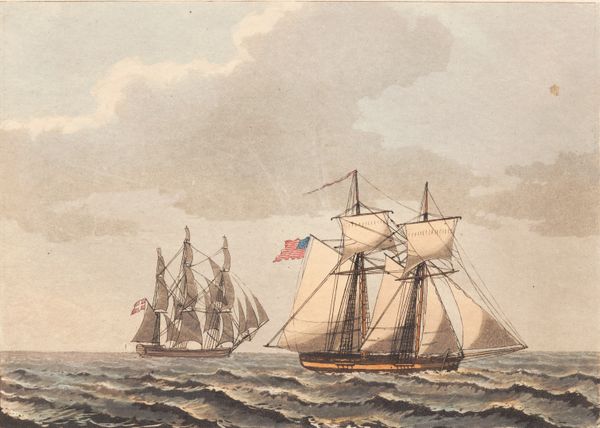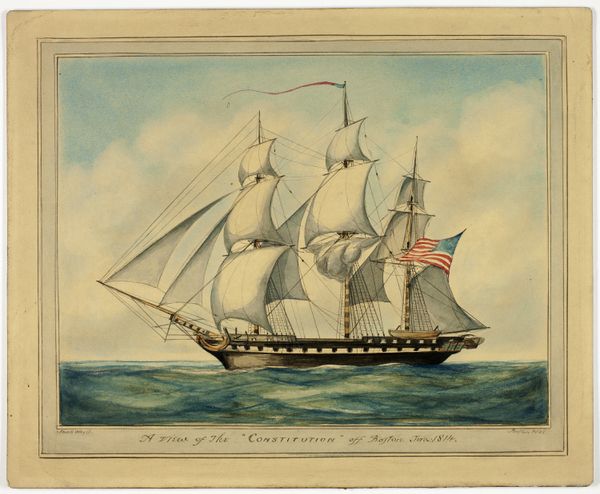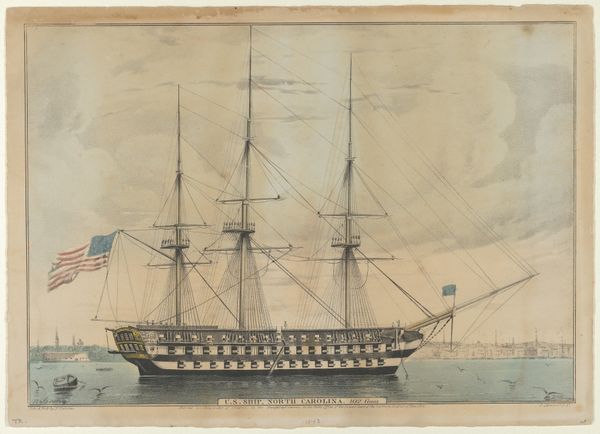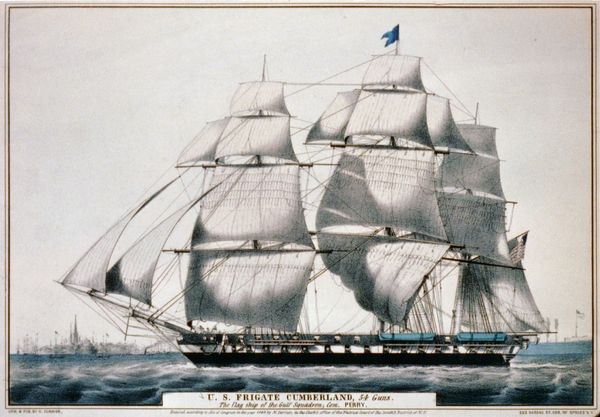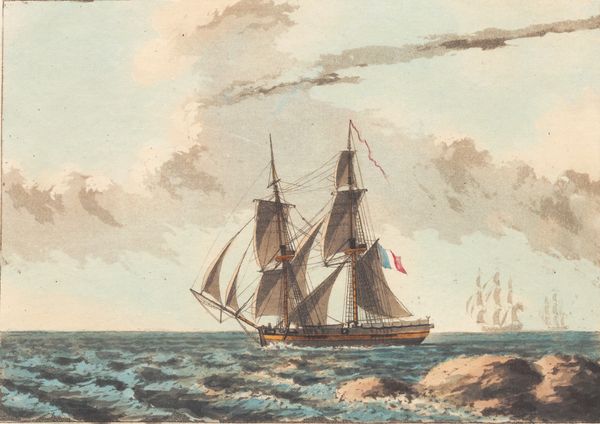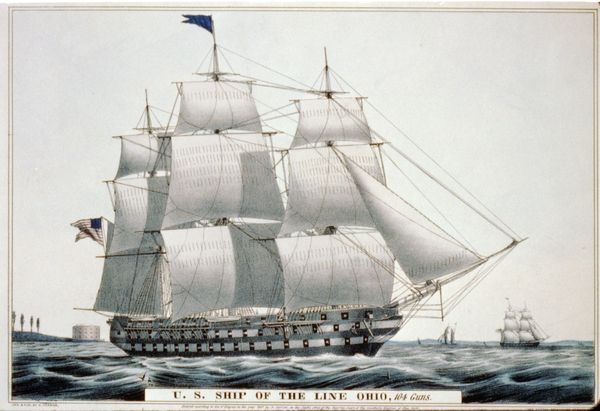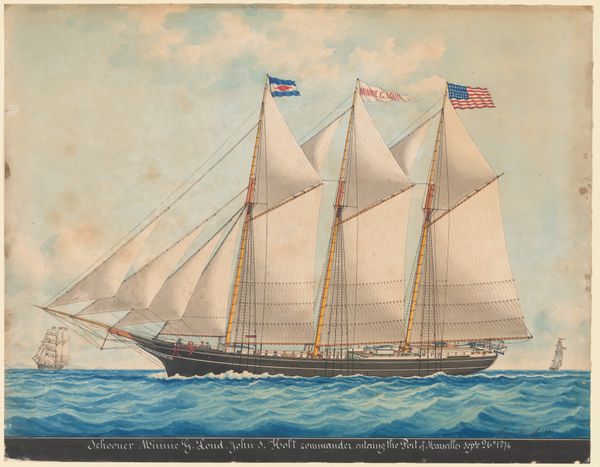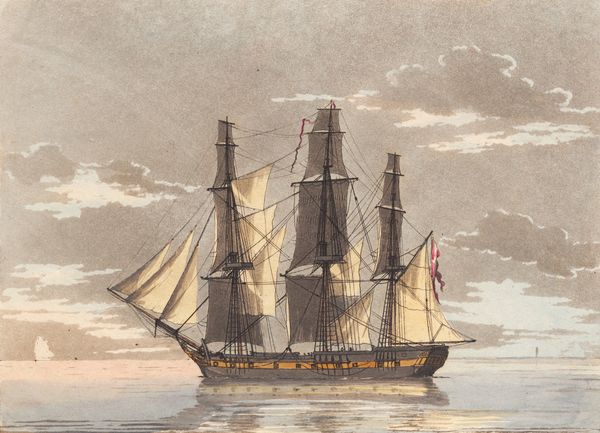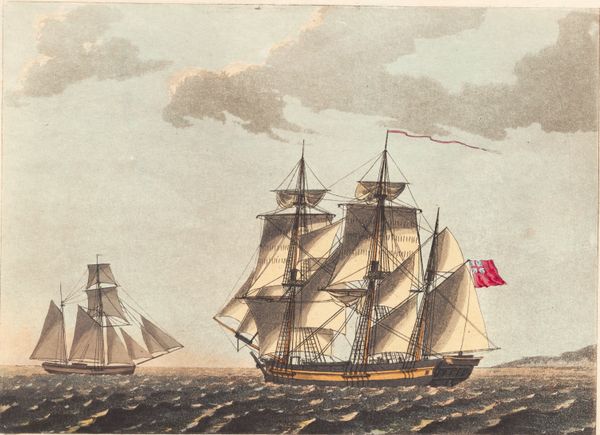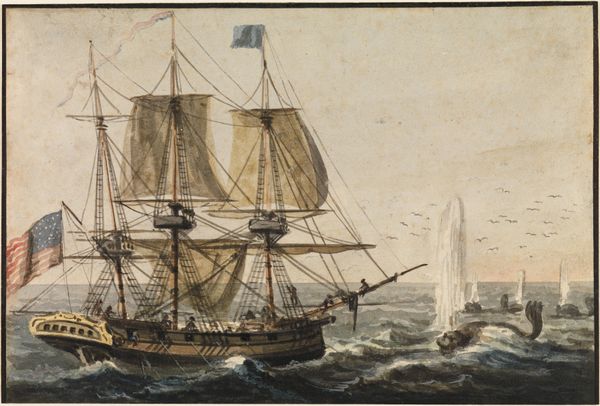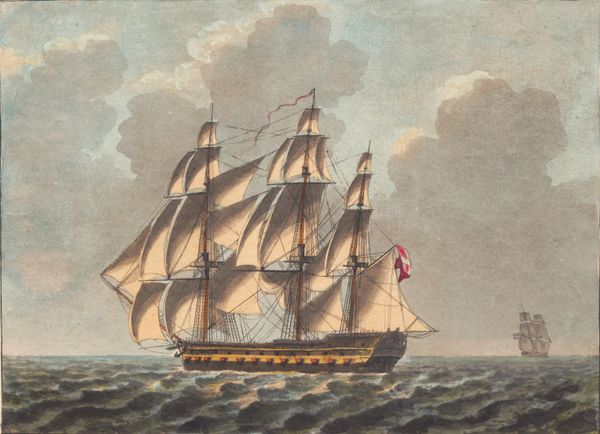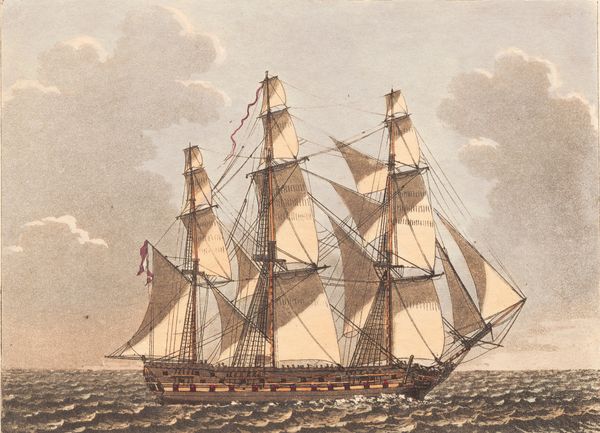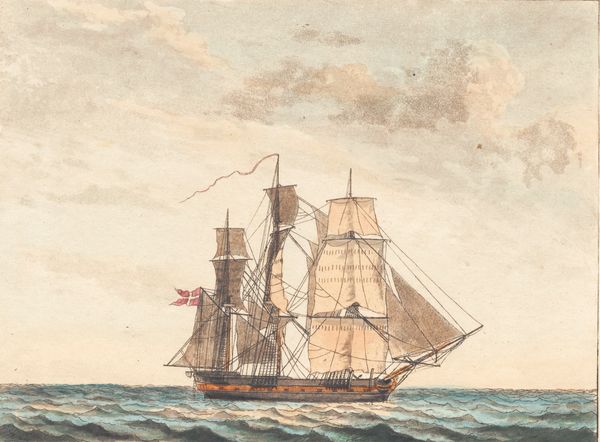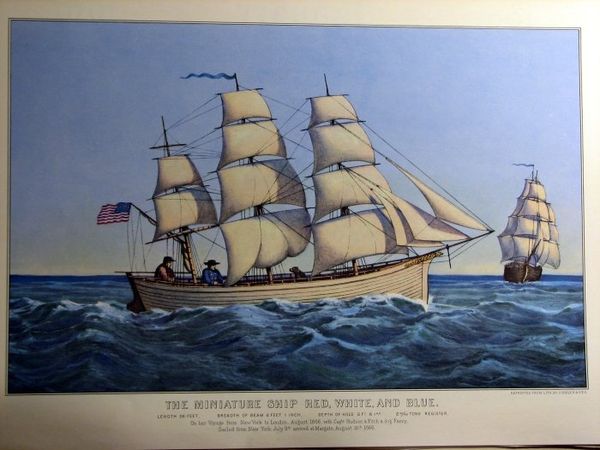
print, watercolor
#
ship
# print
#
landscape
#
watercolor
#
romanticism
#
water
#
watercolor
Copyright: Public domain
Editor: Here we have Currier and Ives's "Vincennes Sloop," dating back to 1845. It appears to be a watercolor print depicting a stately ship at sea. I'm struck by its sort of proud, declarative quality, almost like a maritime portrait. What catches your eye when you look at this piece? Curator: The deliberate portrayal of naval power and national identity is central here. Consider the context: mid-19th century America, experiencing rapid expansion and eager to assert its presence on the world stage. How does this print function within that socio-political framework? It isn't simply a representation of a ship; it's a carefully constructed image intended for public consumption. Editor: So it's more than just documenting the ship itself; it's projecting a certain image of the United States. Curator: Exactly. Currier and Ives were masters of mass media of their day, producing affordable prints for a broad audience. These images shaped public perception. The 'Vincennes Sloop,' with its crisp detail and romanticized depiction of maritime prowess, bolstered national pride and reinforced ideas of American exceptionalism and manifest destiny. Does that change your perception of it at all? Editor: Definitely. I see it now less as just a ship portrait, and more as propaganda, however subtle. It makes me think about the relationship between art and power. Curator: Precisely. These seemingly simple images played a significant role in constructing and disseminating national narratives. Understanding the historical context illuminates the print's true purpose beyond aesthetic appeal. Editor: Thanks for putting that into perspective, it's fascinating how seemingly straightforward imagery can hold such complex historical and social meaning. Curator: Indeed. Analyzing art within its historical and cultural context always yields richer insights, reminding us that art doesn't exist in a vacuum.
Comments
No comments
Be the first to comment and join the conversation on the ultimate creative platform.
